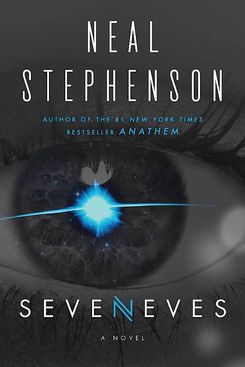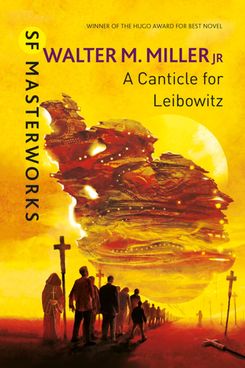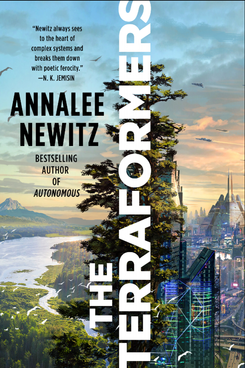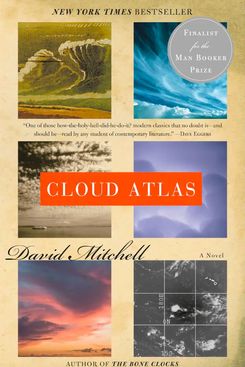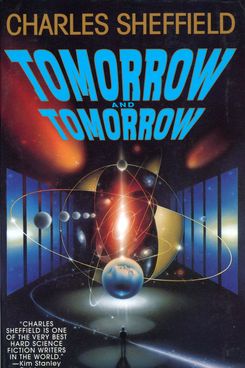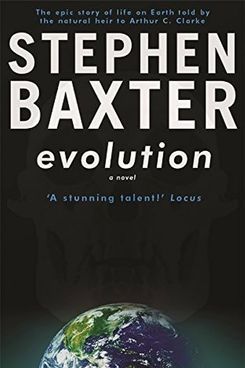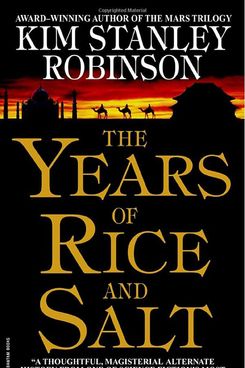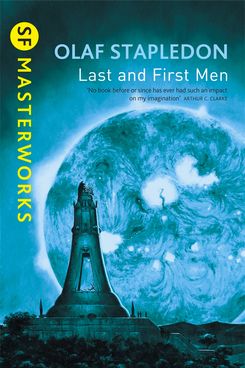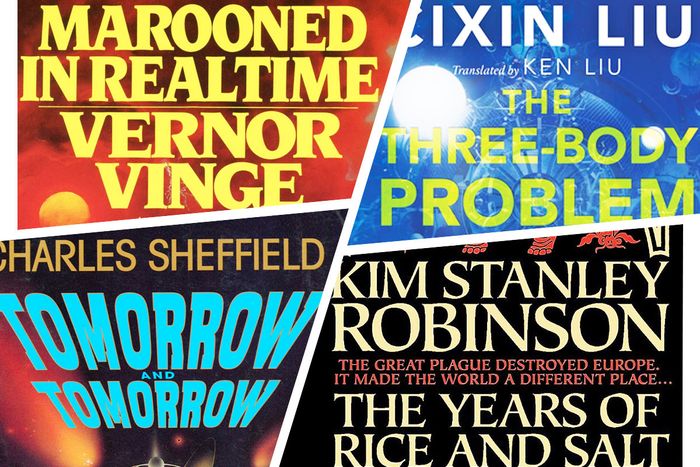
Apple TV+’s Foundation did what many thought was impossible: take Isaac Asimov’s groundbreaking, centuries-spanning books and make them into a cohesive television show. The second season of the series is underway, and while we wait each week to see how the psychohistory plays out, we’ll have to turn elsewhere to get our fix for epic, temporally expansive sci-fi stories.
Foundation is the story of the crumbling of a galactic empire, something that slowly but inevitably takes place over generations. The book grapples with big, civilization-ending ideas, challenges the idea of free will, and ponders which traits are indelibly part of human nature. It’s some heady stuff that you might not think would lend itself to a traditional TV narrative given its generation-spanning scale. The Apple TV+ series, though, is a feat of adaptation, full of richly developed characters and memorable scenes that may or may not involve Lee Pace fighting assassins in the buff.
If you can’t get enough of Foundation’s storytelling, here are ten great books to read that also have plots that span centuries — the types of books that, should they ever be adapted for the big or small screen themselves (if they haven’t been already), will have fans saying “I can’t believe they pulled it off” the way they are about Foundation.
Before the splendidly stupid Moonfall graced the big screen, Seveneves explored what would happen if the moon suddenly decided to destroy life on Earth. In Neal Stephenson’s hard sci-fi story, however, the moon wins — our home planet and most of humanity are wiped out, leaving only a handful of survivors on a “cloud ark” that was haphazardly created around the International Space Station. The book follows how the people on that space ark try to survive (or not, as the case may be), and then leaps five thousand years into the future where humanity has found a way to persevere, albeit with some new challenges they have to face. At 880 pages, Seveneves is a honker, and arguably spends too much time talking about the course of an admittedly important ice comet. The story is compelling, however, and a good read if you’re looking for a story about humanity surviving what seems like insurmountable odds.
Time is a flat circle, especially when it comes to humanity’s ability to destroy itself. That’s an overarching theme of 1959’s A Canticle For Leibowitz. The plot begins 600 years after a 20th-century nuclear apocalypse and centers on an abbey in the Southwest of what was once the United States, where the writings of an electrical engineer named Isaac Edward Leibowitz have been preserved by the order that bears his name. The book is divided into three parts, which each jump ahead 600 years and show, via the happenings at this abbey, how civilization has changed (and how it hasn’t).
The Three-Body Problem is the first in a trilogy that spans, in the end, millions of years. The story starts in the 1960s during the Cultural Revolution in China, where an astrophysicist named Ye Wenjie ultimately makes first contact with an alien species from a planet called Trisolaris. Ye, disillusioned by humanity, makes contact with them again, even though she knows doing so will cause the species to attack Earth. The Trisolarans consequently start a 450-year journey to do so, and the books move on from there, with humans breaking up into different factions as civilization tries to face the inevitable Trisolaran threat. The sci-fi books are expansive and thought-provoking, and it’s easy to see why Game of Thrones showrunners David Benioff and D.B. Weiss are making a TV series adaptation of it for Netflix.
Annalee Newitz’s latest novel takes place on a single planet over a thousand years, where a corporation is looking to terraform it so humans can live there comfortably. The story jumps forward a few centuries every act and follows different characters with each jump. The characters are varied, and in addition to augmented humans include a talking moose (more than one talking moose, actually), and a sentient train who falls in love with an also-sentient cat. In Newitz’s imagined future (it takes place tens of thousands of years from our time), moose speak, anyone can love anyone, and capitalism isn’t so great, actually. It’s a story with quirky moments that also tackles some big issues.
While sci-fi stories that span centuries or millennia often focus on big, civilization-level ideas, Cloud Atlas is different. While the book has major sci-fi elements, it’s more focused on the people we meet rather than the six eras (two of which are set in the future) that we visit. The story jumps from the 19th century to the far future, and in nested fashion returns back to the first era we started in. And while we meet different characters in each time period, it’s clear that the characters are connected. In the 2012 movie adaptation, the cast, which included Tom Hanks and Halle Berry, played different characters in each time period to visualize that connection. In the book, however, how these characters are connected — whether by reincarnation or by the universality of human nature — is up to the reader.
Tomorrow and Tomorrow is all about exploring what humanity might look like millions or even billions of years in the future. To get us there, we follow a musician named Drake Merlin (yes, that’s his name; the book has pulpy elements) from the 21st century. Drake decides to cryogenically freeze himself and his wife in hopes future technologies will be able to cure his wife’s currently incurable disease. He gets woken up at several points in the future, and human civilization has drastically changed with each awakening. But no one, it seems, can make his wife better. And so Drake doggedly continues on billions of years into the future, with the story ending potentially with the end of the universe.
Ever wondered what the world was like for our 65-million-year-old rat-like ancestors? If so, Evolution has got you covered — the book is more a series of short stories than a cohesive narrative, but it follows humanity’s journey from being a rodent that takes to the trees in the age of the dinosaurs, to human civilization as we know it, to 500 million years into the future. At 646 pages, it’s a big book that crams a lot of ideas into it and paints an arguably bleak picture of the nature of humanity.
This alternate history stays earthbound and explores how events might have unfolded if the Black Plague in the 14th century killed 99 percent of people in Europe rather than a third. With the white Christian population of Europe all but gone, the book chronicles how our known history may have changed (or stayed the same) across ten chapters, each of which jumps forward in time. The characters in each time period — including a 17th-century alchemist and soldiers in a world war between the Chinese, Muslim, and Hindu superpowers that arose in the West’s absence — are reincarnations of those we saw previously, which makes the book surprisingly character-driven given the swath of time that it covers.
Looking for a murder mystery to go with your millennia-spanning story? In Marooned in Realtime, Detective Wil Brierson gets thrown into a technological device called a bobble, a sphere in which time stops, and those within it can travel thousands of years forward unchanged. This detective arrives 10,000 years into the future to a point in time where humanity has been wiped out. Other people in bobbles of their own also end up in this post-armageddon world, and a group of them are working to coordinate the survivors to travel forward to a point in time when there will be enough people to form a viable community. During one of those jumps, a woman was purposefully left out of her bobble and dies of old age. It’s up to Brierson to solve the case and, in the process, maybe save humankind as well.
This 1930 novel took on the task of imagining how humans would change over 2 billion years. The result is a step-by-step annotation of how humans evolved into 17 other species, all with varying physical capabilities and eventually colonizing Neptune. In an attempt to outdo himself, Stapledon’s follow-up book, Star Maker, centers on a human whose consciousness gets separated from his body and travels the cosmos for billions and billions of years, joining other disembodied minds until they cumulatively meet the titular being who created not only our universe, but many others as well. The two books have influenced numerous well-known sci-fi authors, and brought the idea of the multiverse to popular culture decades before the Marvel Cinematic Universe was even a thing.


